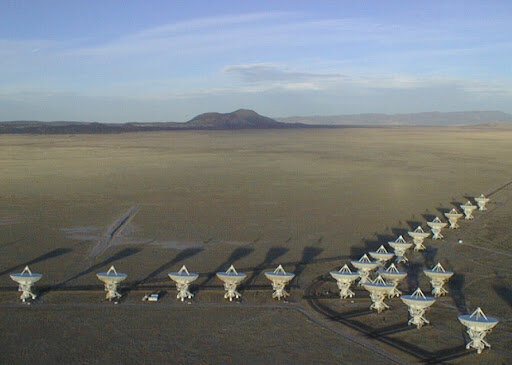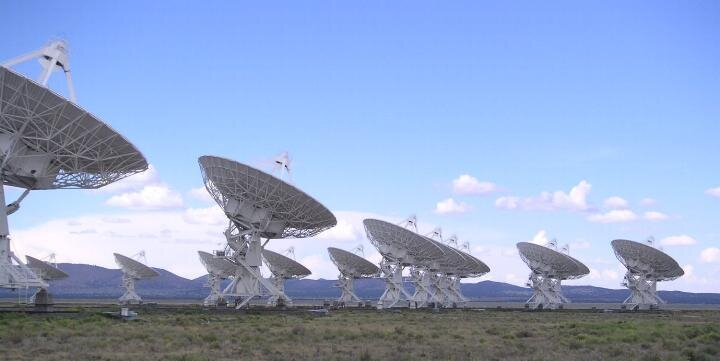Why Radio Telescopes Use Multiple Dishes Instead of One Giant Dish
Written on
Understanding the Need for Multiple Dishes
Recently, a viewer from our Ukrainian channel posed an intriguing question: Why do most radio telescopes consist of numerous smaller dishes instead of a single large one? It’s important to clarify that the reasons behind each aspect are distinct.

The Very Large Array (VLA) stands as one of the most extensive collections of radio telescopes. Source: http://www.walkinspace.ru
The absence of giant radio telescope dishes is primarily due to two factors. First, constructing a large dish requires a high degree of precision. For example, at a diameter of 100 meters, the weight of the dish and external forces like wind can cause considerable deformations. Increasing the size further would lead to exorbitant costs that are impractical for any nation.
Second, the fundamental principle of astronomy applies to all telescopes: a larger lens or dish can detect fainter objects and provide enhanced resolution. However, radio telescopes can circumvent this principle in a unique way.

Instead of constructing a single dish with an impractical diameter of 100 km, we can deploy two smaller dishes, each with a diameter of 10 meters, positioned 100 km apart. This configuration forms a radio interferometer. By observing simultaneously and accurately processing the two signals, we can achieve imaging quality equivalent to that of a 100 km dish. Furthermore, placing two smaller dishes is significantly more cost-effective than a single massive one. This innovative strategy allows for the placement of dishes at great distances, including orbiting ones, which enhances resolution far beyond that of conventional telescopes.
The Role of Multiple Dishes in Imaging
Why not rely on just two dishes for observations? The answer lies in the limited field of view of a single dish, which captures only a minute section of the sky—essentially a single pixel. For instance, capturing an image of a star cluster could take months of observation. However, by increasing the number of dishes, the time needed for imaging is drastically reduced. Each additional dish exponentially decreases the required observation time, allowing approximately fifty dishes to create images in just a few hours.

Source: wikimedia.org
Moreover, utilizing numerous dishes enables the radio telescope to produce images that more closely resemble what we perceive with our eyes. The initial images generated by radio telescopes are mathematically constructed and do not visually reflect the observed object. It is only through the combination of data from multiple pairs of dishes that we can create images that accurately resemble the targeted observation.
Engage with Our Content!
If you’re interested in more space-related articles, feel free to clap! Subscribe to our channel and ask your questions, and I’ll address them in future articles. If you appreciate my work, consider supporting me by becoming a Medium member for just $5 a month to help us enhance our content.
Chapter 2: The Science Behind Radio Telescopes
The first video titled "Why Single Dish Radio Telescopes?" by Will Armentrout discusses the rationale behind single dish designs and their limitations.
The second video, "I Climbed Up a Radio Telescope! This Is How They Work..." provides a practical look at how radio telescopes operate, including insights into their construction and usage.